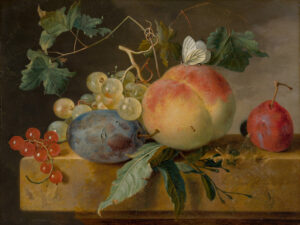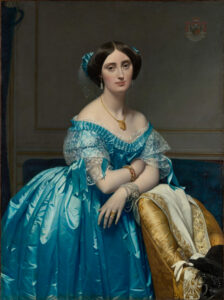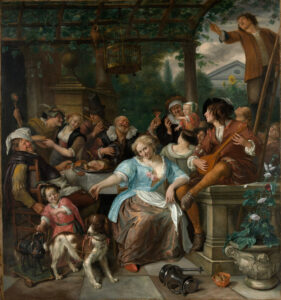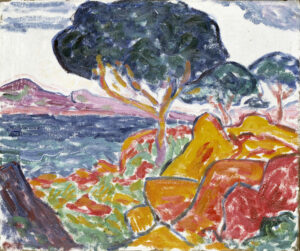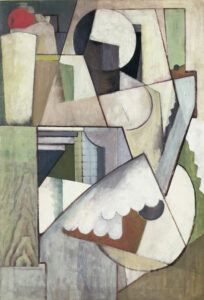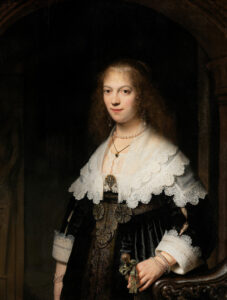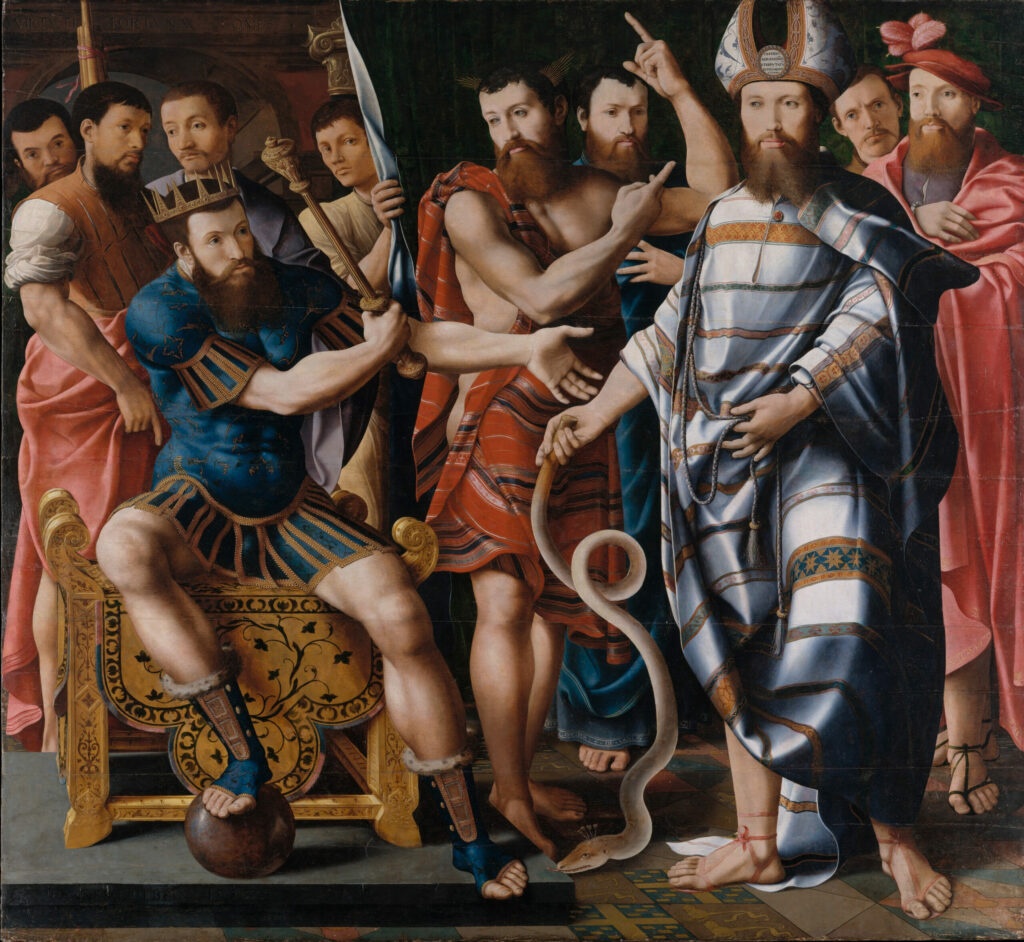
“Moses and Aaron before Pharaoh: An Allegory of the Dinteville Family” (1537) illustrates the art of allegorical portraiture in French Renaissance, blending biblical narrative and contemporary history.
The five Dinteville brothers, influential nobles in the royal entourage, stage themselves as protagonists of the Exodus: Moses and Aaron imploring Pharaoh to free the Hebrew people. This transposition reveals a strategy of social rehabilitation after the scandal in which Gaucher de Dinteville was accused of moral offense, leading to the family’s exile. The artist deploys meticulous Flemish technique in rendering sumptuous fabrics, flesh tones, and expressions. Aaron’s serpent, a staff transformed to defy the Egyptian magicians, symbolizes the hoped-for transformation of their disgrace into divine favor. This theatrical composition testifies to the political use of religious art, where sacred iconography legitimizes the plea for royal pardon through biblical intercession.
Further Information on Moses and Aaron before Pharaoh: An Allegory of the Dinteville Family
- Moses and Aaron before Pharaoh: An Allegory of the Dinteville Family, by the Master of the Dinteville Allegory, 1537
- 176.5 x 192.7 cm (69 1/2 x 75 7/8 in.), oil on wood
- The Metropolitan Museum of Art, Fifth Avenue, New York, displayed in Gallery 612
The Master of the Dinteville Allegory, Netherlandish or French, remains an anonymous figure of the 16th century, probably active in the Fontainebleau circle. His name derives from this exceptional work, a rare testimony of his known production. His technique reveals the influence of Flemish primitives and French court art, characterized by acute psychological realism and consummate mastery of group portraiture. This artist skillfully combined iconographic innovation and pictorial tradition to create a work of rare narrative complexity, where politics, religion, and family strategy are artfully intertwined.

